


 
Contemporary media practice involves a rigorous investigation of, and engagement with continually evolving technologies. Our digital arts program encourages students to combine an understanding of the theoretical discourses of new media and visual arts with strong technical sophistication, a rich sense of visual design and an ability to articulately express themselves as artists.

|
|
Assorted Digital Arts Class Projects
ARTD 408: '3D modeling for Physical Output', & 'Expressive Algorithms'
Every summer Digital Arts faculty have the opportunity to propose experimental courses that fall outside of the standard canon of digital arts classes. Here are some student projects from a handful of those classes that I taught.
ARTD 408: Expressive Algorithms was an exploration of visual programming and realtime outputs from Processing and Flash. ARTD 408: 3D Modeling for Physical Output was a course that taught basic 3D modeling coupled with unconventional output methods.
Cerebral Diffraction
by Robert Dubois
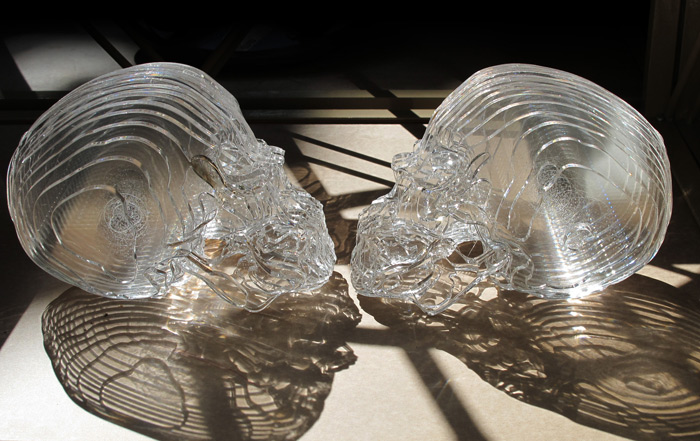
Robert Dubois studies the human form and through savy choices of material and output processes, creates these transparent skulls. Material: 3/8" Acrylic. Process: Blender 3D + slice modeler, laser cutter, epoxy. Scale: real size (~11" across).
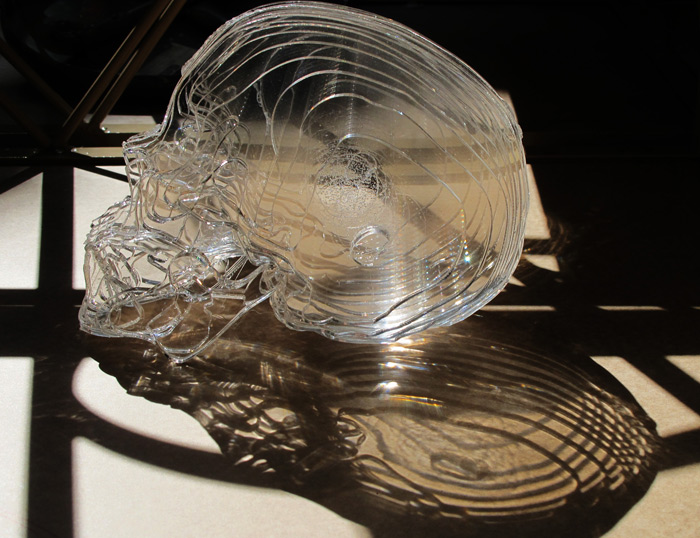
Bio Coin
By Peter Pazderski

Digital Arts MFA Peter Pazderski creates work that addresses gaming culture and the social artifacts that it has on our society. Here Pazderski has 3D modeled and printed a 'Bio Coin' that blends the forms of currency and organic features. A statement from the artist:
"The Bio coin is a visual pun playing on the idea of nature as currency. The design is based off of a 2D scientific drawing of a sand dollar, which was then rendered in 3D on a computer and built back into real-space with 3d printer. This process can be interpreted as a creation of value through interpretation. By taking an object which was once a real thing, and turning it into an idea on paper, that object attains scientific purpose and power, by reinterpreting that scientific purpose through technology and art the object assumes some of its original power as a natural aesthetic object."
Analog Camera
by Sergei Laranov

Digital Artist Sergei Laranov plays on both photographic and 8-bit references in this pixel art inspired camera. Medium: Cardboard. Process: Blender 3D + slice modeler, laser cutter.
Untitled Algorithm
by Doug Potts
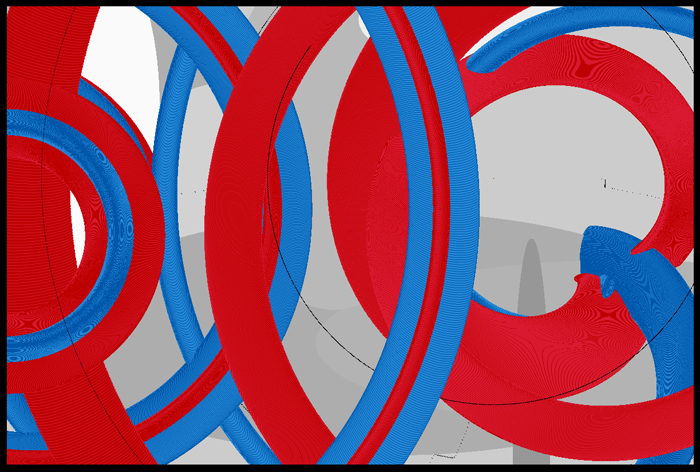
Artist Doug Potts creates an active landscape in this realtime Processing algorithm based on radial patterns and contrasting colors. Potts also created captivating video work.
Squashed (in Utero)
by Derek Watts
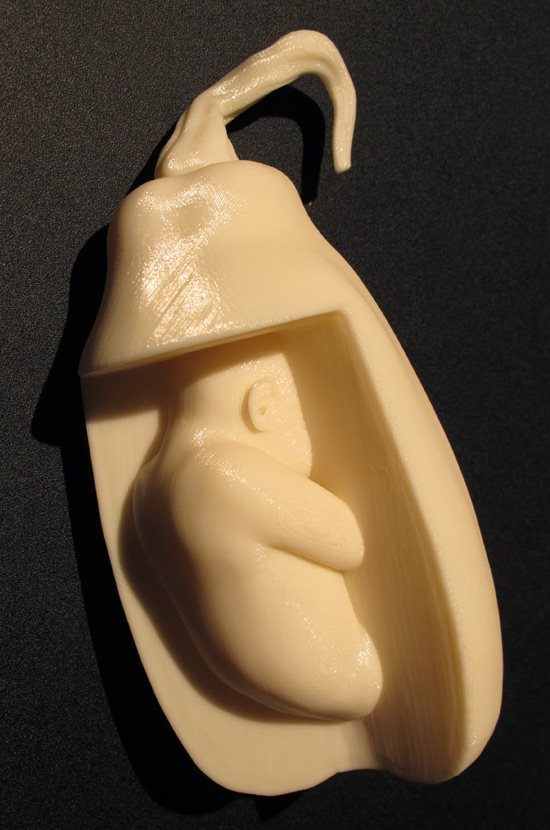
Digital Artist and 3D modeling guru Derek Watts creates this rich and loaded form that tempers the organic form (and real life scale) of a garden's bounty with the compacted delicacy of a human child. Scale: 5"x5"x11". Medium: ABS Plastic (3D Print). Tools: Blender 3D and the dimension 3D printer in Portland.
The Core of Store Conciousness
by Xiaoxiang Liu (Spring '09)
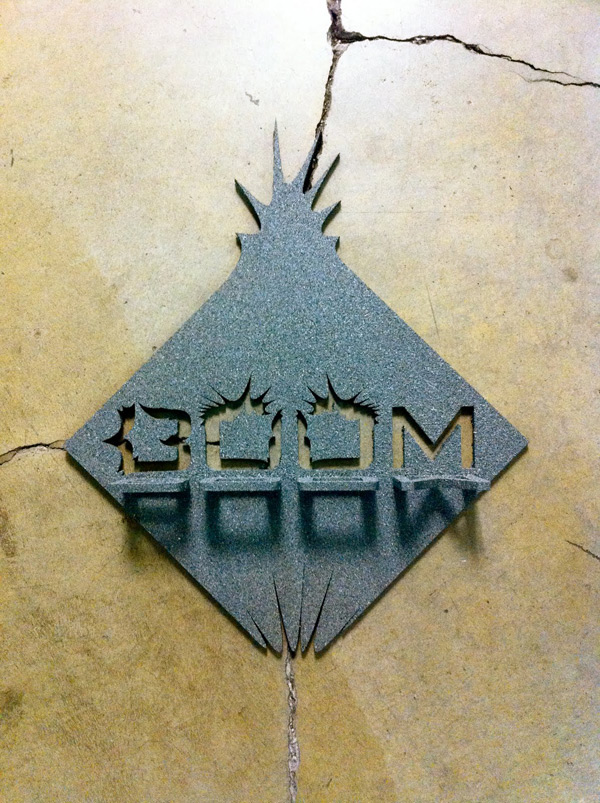
Statement from the artist:
Cross Hair
by Zoe Blatter
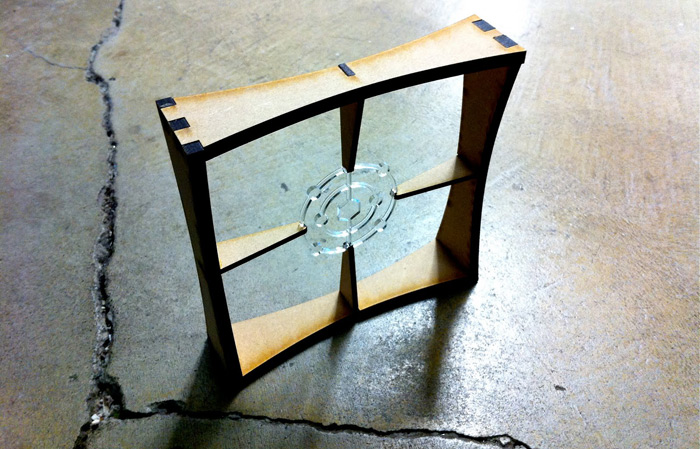
Boom
by Zoe Blatter

Both of these projects by Product Design student Zoe Blatter were created from the standpoint of melding flat two dimensional materials with 3D visualizing and modeling tools. The first brings one of the more potent pieces of virtual gaming language, the cross hair from a 3rd person shooter, to a physical format. Acrylic and basswood.
The second piece "Boom" plays with form, light & shadow, all of which are reminiscent of the wake and reaction that come from explosions.
|














